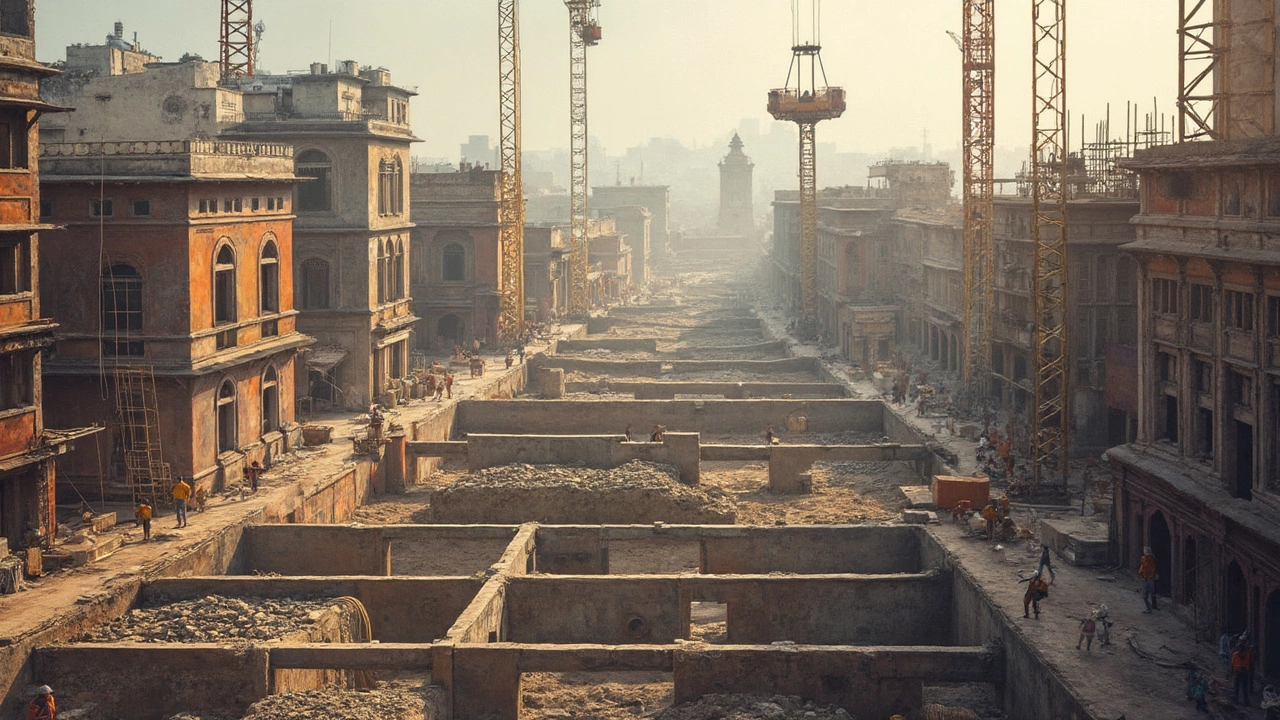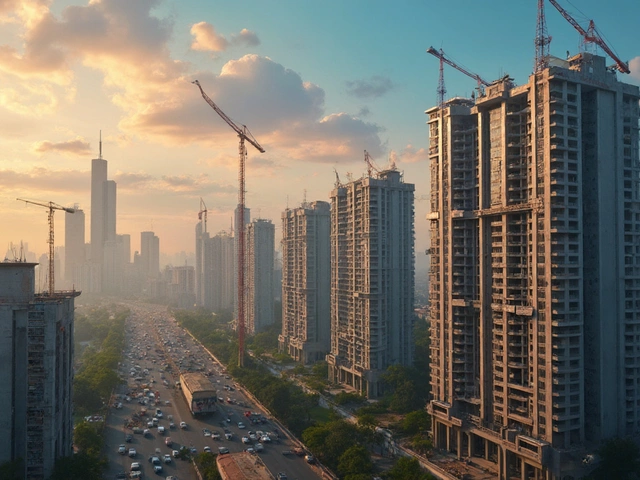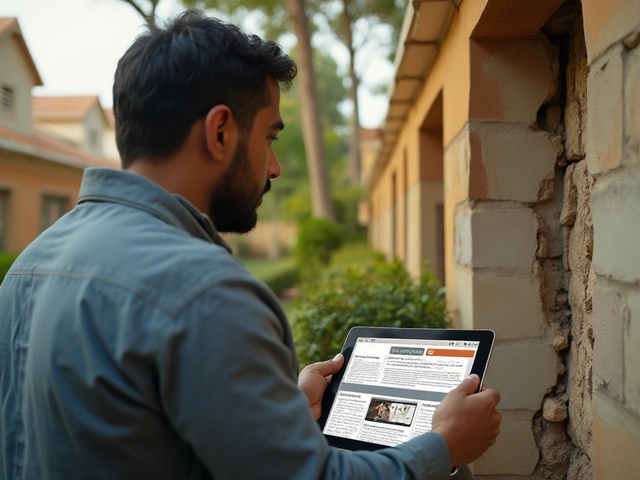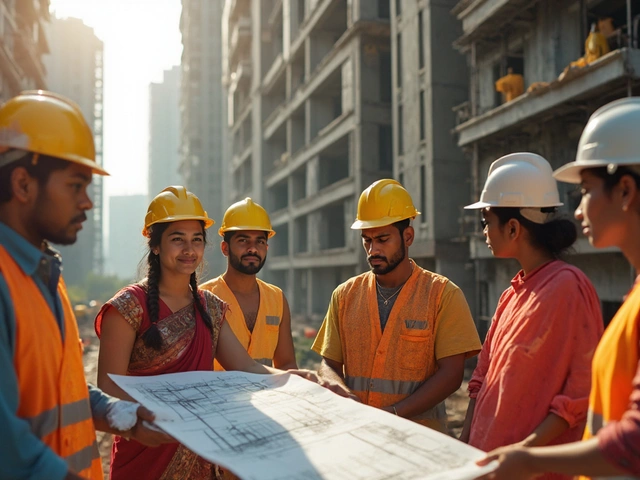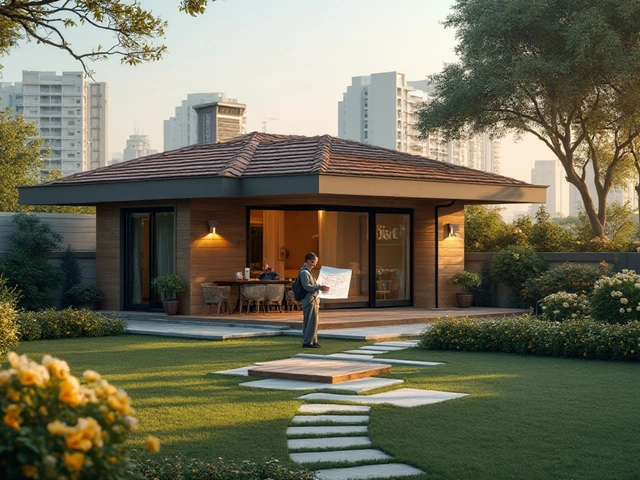Ever wonder why most houses, especially in bustling neighborhoods, seem to have concrete in just about everything? It's no coincidence. Concrete's the go-to material for homes around the world, and for good reason! This stuff isn’t just about looking solid; it’s pretty much the backbone of modern construction.
Let’s break it down. Concrete is super strong and versatile. From your basement to your driveway, it’s everywhere. Got a crooked floor? Concrete's got your back. Need to build that dream patio? Yep, it’s concrete again. It offers this crazy blend of affordability and durability that's tough to beat. You wouldn’t believe how well it holds up against the elements, from rain to extreme heat!
- Why Concrete Is the Go-To Choice
- Understanding Concrete's Benefits
- Tips for Using Concrete in Home Projects
- Sustainable Alternatives to Consider
Why Concrete Is the Go-To Choice
Concrete is everywhere, right? From sidewalks to skyscrapers, it's hard to avoid this construction material. But what makes it so special? Let’s dig into why concrete has become the material of choice for home building.
First off, concrete's got a reputation for being incredibly strong. It can handle loads of weight without breaking a sweat. This makes it perfect for foundations, which literally hold up your home. Worried about extreme weather? Concrete’s got you covered with its resilience against wind, rain, or heat. Plus, it doesn’t rot or rust, so forget about the usual wear and tear.
Another reason concrete wins is its versatility. You can pour it into any shape or size. Want a fancy driveway or a sleek patio? No problem! Concrete can mimic other surfaces, like stone or brick, at a fraction of the cost.
Speaking of costs, concrete is pretty budget-friendly. Building a house can get pricey, but choosing concrete for things like walls and floors can help shave off significant expenses. It lasts for decades with minimal upkeep, saving you money on repairs.
One underrated perk is that concrete is fire-resistant. Unlike wood, concrete doesn’t catch fire easily, adding an extra layer of safety to your home. That peace of mind? Priceless.
| Comparison | Wood | Concrete |
|---|---|---|
| Fire Resistance | Low | High |
| Maintenance Cost | High | Low |
| Lifespan | Medium | Long |
It’s no wonder concrete is the superstar of home building. Whether you're laying down a slick new floor or putting up sturdy walls, concrete's got the flexibility and durability to meet your needs. So next time you spot a construction site, you’ll know why there’s likely to be a whole lot of concrete being poured.
Understanding Concrete's Benefits
Concrete isn't just popular in home building because it's been around forever; it's truly a powerhouse in the construction world. First off, durability is its middle name. This stuff can hold its own against wild weather and even natural disasters like earthquakes and hurricanes. If that doesn't make your house feel like a fortress, I don't know what will.
Another biggie is its strength. It’s not just about putting up walls; it’s about creating spaces that really last. When concrete sets, it gets stronger with time, unlike some materials that weaken. So your home stands the test of time. Plus, it's a dream for architects because it can be molded into any shape you can think of. Want an oddly shaped living room? Concrete’s game.
You also get some serious fire resistance with concrete. It doesn't burn, so it acts as a safety net, providing a degree of protection against house fires. On top of that, concrete's great for noise reduction. Your house won't be a concert hall for outside sounds. It's like having peace and quiet built right into your walls.
When it comes to costs, concrete's pretty budget-friendly. Considering how long it lasts, it gives you great value for money without needing constant repairs. It's not just about the expense of putting it in but also the savings you'll have in the long run on maintenance. And yes, it’s also eco-friendly. Burnished correctly (like with fly ash), concrete minimizes its carbon footprint.
- Sustainability: Mixed with recycled materials, concrete becomes part of the solution, not the problem.
- Thermal Efficiency: Keeps your home cozy in winter and cool in summer.
- Mold and Rot Resistant: A good choice if you live in damp areas.
Here's a cool stat to put things in perspective: Roughly 25 billion tons of concrete are produced each year! That's how essential and widespread it is. If there’s one thing we've learned, it’s that concrete stands solid in every sense of the word, from sustainability to strength.
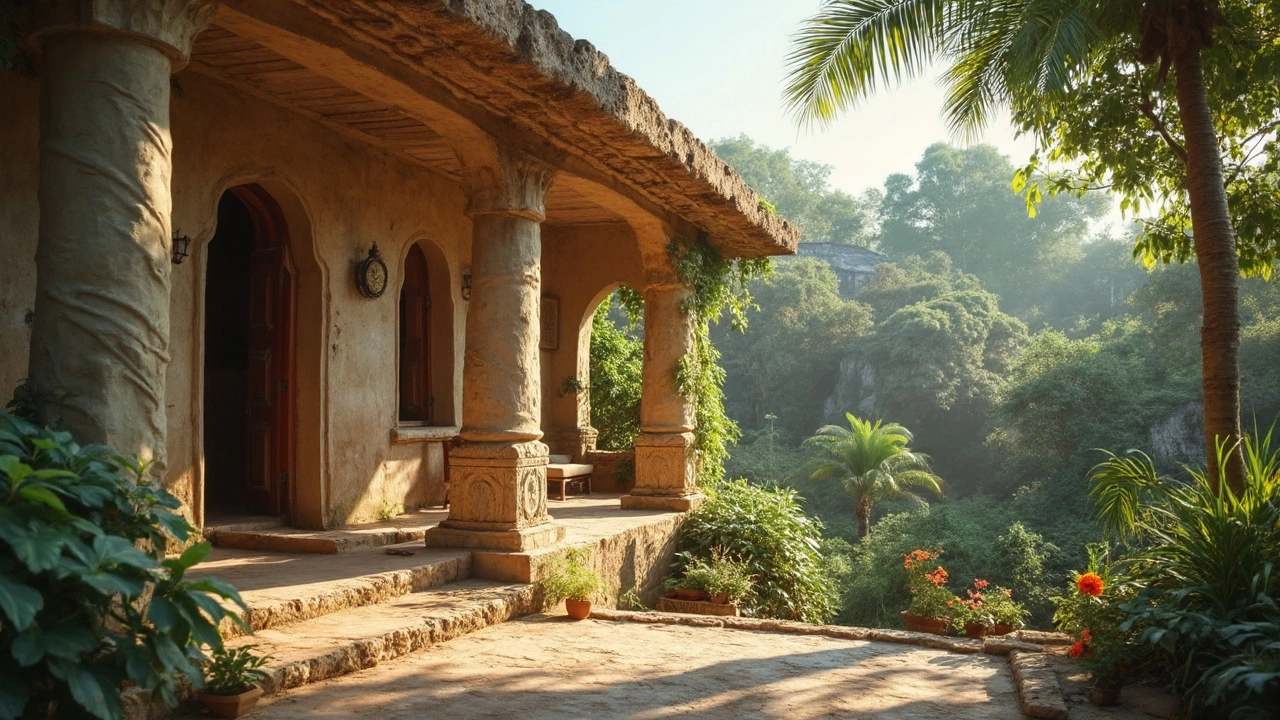
Tips for Using Concrete in Home Projects
Thinking about getting your hands dirty with some concrete? Great choice! Here’s what you need to know to make your project a success.
First off, prep is key. Make sure you've got a well-planned layout before you even think about mixing concrete. Poor prep work can lead to uneven surfaces and cracks down the line.
When it comes to mixing, precise measurements are crucial. You want a mix that's neither too dry nor too wet. Follow the manufacturer's instructions for the best results. A good rule of thumb: stick with a 1:2:3 ratio of cement, sand, and gravel, plus enough water to make it workable.
Here are some steps to guide you through a typical concrete project:
- Prepare the area: Clean and clear the site of debris, and set up any necessary forms to shape the concrete.
- Mix the concrete: Use a concrete mixer or a wheelbarrow with a shovel for smaller projects. Aim for a thick, oatmeal-like consistency.
- Pour it: Work from one end to the other, ensuring even distribution.
- Trowel the surface: After pouring, use a trowel to smooth out any bumps or inconsistencies. Make it as flat as possible for a professional look.
- Cure and seal: Once it’s set, keep the surface moist for a few days to enhance strength. Consider applying a sealant to protect against wear and tear.
Now, if you’re concerned about environmental impact, there're sustainable construction practices to think about. You could explore eco-friendly concrete options, like those that incorporate recycled materials, or even look into alternative materials like fly ash or slag cement.
Remember, safety comes first. Always wear protective gear, like gloves and goggles, when working with concrete. It's about building smarter and staying safe!
Sustainable Alternatives to Consider
If you're all about going green and cutting down on your carbon footprint while still planning that new build or renovation, there are some amazing sustainable construction materials worth checking out. While concrete is everywhere, thinking outside the mixing bowl can do wonders for the environment!
First up, we have bamboo. This plant isn’t just for pandas. It's one of the fastest-growing resources on the planet and comes with remarkable strength. Picture this—it grows up to three feet in just 24 hours! Plus, it’s light and flexible, making it perfect for structures where you might need a bit of elasticity.
Then, there’s reclaimed wood. Talk about giving old materials a second life. Not only does using reclaimed wood add a unique charm to your house, but it also means fewer trees chopped down. Vintage beams from old factories or barns make stunning accents or even main structures for homes.
- Straw bales: You might think they’re just for farms, but straw bales are excellent for insulation. They’re renewable, biodegradable, and can dramatically cut heating and cooling costs.
- Hempcrete: This eco-friendly alternative to concrete is made from hemp fibers mixed with lime. It’s breathable, naturally fire-resistant, and great at regulating temperature and humidity.
- Rammed Earth: This ancient technique involves compacting a damp mixture of earth (usually clay and sand) to create solid walls. It’s incredibly durable and offers great thermal mass, meaning it naturally regulates indoor temperature.
And here’s a fun fact for you—did you know some companies are developing concrete alternatives from waste materials like rice husks and fly ash? That's right, turning trash into treasure is a real thing!
Switching to these sustainable options doesn’t just help save the planet; it often leads to lower energy bills and a healthier living environment. So, when planning your next project, why not take a step toward sustainable construction? Your wallet—and the Earth—will thank you.
